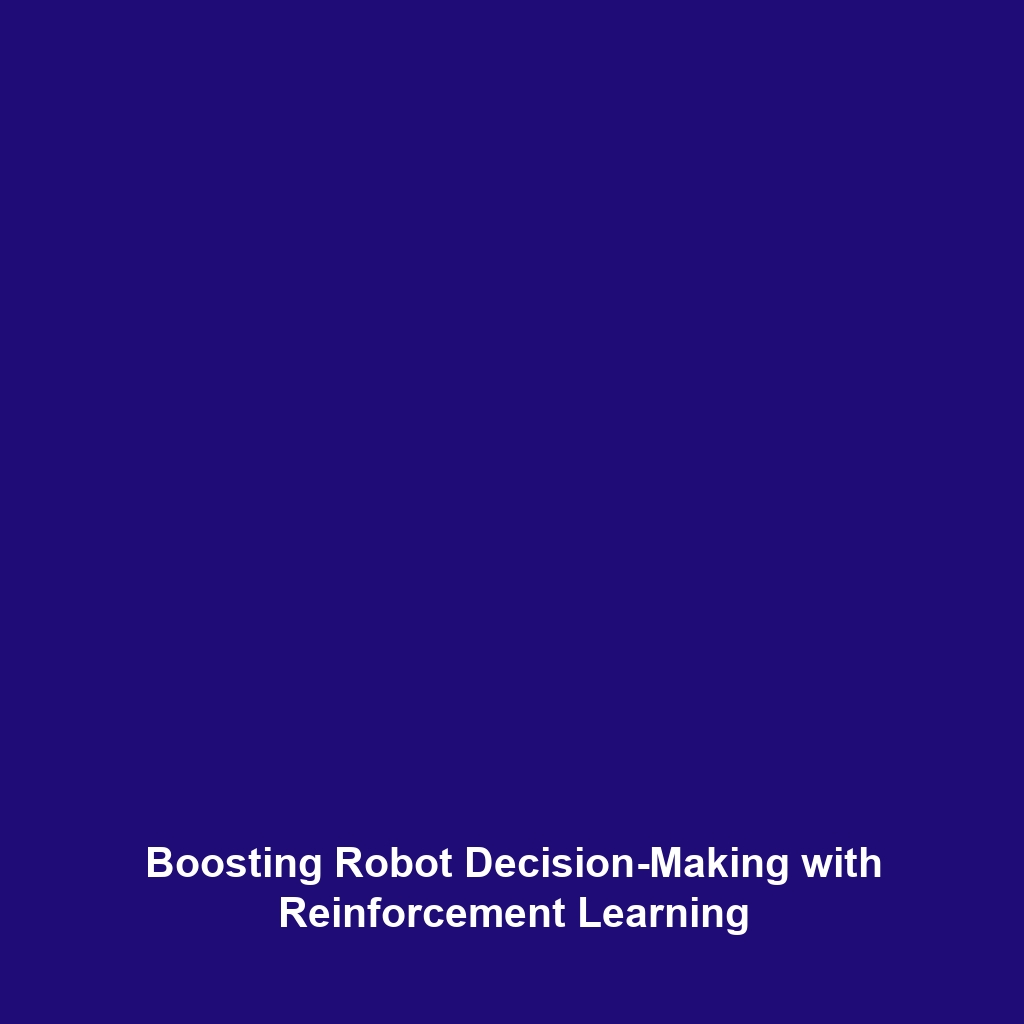How Reinforcement Learning Algorithms Improve Decision-Making in Robots
Introduction
Reinforcement learning (RL) algorithms have revolutionized the field of robotics, enabling robots to make informed decisions based on past experiences. This significant advancement plays a vital role in the development of autonomous robots, where efficient decision-making is crucial for tasks ranging from navigation to complex problem-solving. The integration of RL algorithms empowers robots to learn from their environments, adapt to new scenarios, and optimize their performance without human intervention. Understanding how these algorithms enhance decision-making processes is essential for the future of autonomous robotics.
Key Concepts
Understanding Reinforcement Learning
Reinforcement learning is a subset of machine learning where agents are trained to take actions that yield the highest cumulative reward. The fundamental principles include:
- Agent-Environment Interaction: The robot serves as the agent, which interacts with the environment to learn effective decision-making strategies.
- Reward Mechanism: Positive reinforcement guides the robot toward preferred outcomes, while negative feedback discourages unfavorable actions.
- Exploration vs. Exploitation: Agents must balance exploring new strategies while exploiting known successes.
Reinforcement Learning in Autonomous Robots
In autonomous robots, RL algorithms enhance decision-making by allowing robots to autonomously adapt to their actions and optimize behavior in real-time. This capability is essential in various autonomous applications, enabling robots to perform tasks efficiently and effectively.
Applications and Real-World Uses
Reinforcement learning algorithms have a substantial impact on the functionality of autonomous robots. Here are some notable applications:
- Robotic Navigation: RL enables robots to navigate complex environments, such as warehouses or disaster zones, by learning optimal paths.
- Healthcare Robotics: Robots equipped with RL can learn proper techniques for patient care, improving their efficiency in hospitals.
- Industrial Automation: RL algorithms optimize the operation of robotic arms and automated manufacturing processes, enhancing productivity.
- Autonomous Vehicles: The decision-making capabilities of self-driving cars are significantly enhanced through RL, allowing for safer navigation.
Current Challenges
Despite the advances, several challenges remain in studying and applying how reinforcement learning algorithms improve decision-making in robots:
- Sample Efficiency: RL typically requires vast amounts of data to learn effectively, making it resource-intensive.
- Safety Concerns: In uncertain environments, RL can lead to unpredictable or dangerous behaviors.
- Computational Resources: The complexity of RL algorithms demands significant computational power, limiting real-time applications.
- Environment Variability: Robots may struggle to adapt learned behaviors to varied environments, leading to reduced performance.
Future Research and Innovations
The future of autonomous robots and reinforcement learning holds exciting possibilities. Key areas of innovation include:
- Transfer Learning: Developing methods that allow robots to apply knowledge gained in one task to different but related tasks.
- Hierarchical Reinforcement Learning: Simplifying complex tasks into manageable sub-tasks for more effective learning.
- Generalization Techniques: Enhancing the ability of robots to generalize their learning from one environment to another.
- Collaboration Among Robots: Enabling multiple robots to learn and adapt collectively, improving overall system efficiency.
Conclusion
In summary, reinforcement learning algorithms significantly enhance decision-making capabilities in autonomous robots, enabling them to learn, adapt, and perform tasks with remarkable efficiency. The current applications demonstrate their potential across various industries, while ongoing research seeks to address existing challenges and foster innovation. To stay informed about the latest developments in autonomous robotics, consider exploring additional resources on our site or follow our future publications.

Leave a Reply